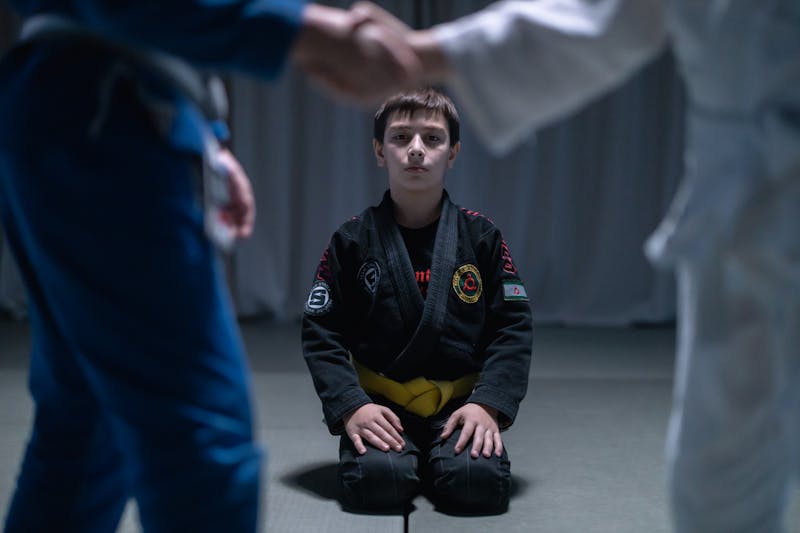Gaining a black belt in karate signals an important turning point and reflects genteel qualities such as commitment, knowledge, and great skills. Though each black belt has unique requirements that depend on the dojo or style of karate, there are some specific requirements to achieve a black belt in karate which are in common that most karate practitioners will have to fulfill on their way to this prestigious level surpassing all other karate belt levels.
How to be a black belt in karate?
Specific requirements to achieve a black belt in karate
1. Time Commitment
As a matter of fact, most dojos have a set timeframe that a student should meet before they can test for the black belt. Such pretty much covers three to five years of handwork and practice that is depending on style and the association policy. For instance, in some styles, students have to wait a minimum of five years before they can be able to try and earn a karate black belt, Shodan in this case.
2. Physical Proficiency
In general, students are required to showcase very high levels of body competence with regards to the performance of karate, such as;
- Kata: Performing specified techniques and movement patterns in a specific order.
- Kumite: Sparring skills that reflect the ability to apply techniques in a live setting.
- Self-defense techniques: Skills and proficiencies that would be useful in daily life.

Image Credit: Pexels, olia danilevic
3. Knowledge of Karate Principles
One’s all-around knowledge of karate should not be limited to its history, key terms, and basic philosophies. Some dojos expect students to take an oral or written test about topics including:
- Karate techniques
- Historical figures in karate
- The significance of kata and kumite
For instance, some black belt tests include a 60-question written exam on karate concepts and principles.
4. Teaching Ability
Students becoming black belts are anticipated to be competent teachers as they pedagogically progress through the rank. In this category, we have:
- Assisting lower-ranked students
- Leading warm-ups or drills
- Effective transfer of technique
5. Demonstration of Advanced Techniques
Students must be proficient in advanced techniques and forms required for their rank. This often includes performing multiple katas from previous ranks and demonstrating their application (bunkai).
6. Sparring Requirements
Most black belt tests involve rigorous sparring sessions where candidates must showcase their fighting skills against multiple opponents. This can include:
- Continuous sparring for a set duration (e.g., 30 minutes)
- Jiyu-kumite (free sparring) with various partners
The expectation is to demonstrate control, strategy, and adaptability during these sessions.
Specific Requirements by Degree
As students progress through the black belt ranks, the requirements become more complex and demanding. Below is a summary of what parties typically expect for each degree:
1st Degree Black Belt (Shodan)
- Minimum of 3 years training.
- Demonstration of kata proficiency.
- Basic self-defense techniques.
- Written exam covering fundamental concepts.
2nd Degree Black Belt (Nidan)
- Minimum of 2 years after receiving Shodan or 7 years total training.
- Improved teaching ability and knowledge of advanced techniques.
- Contribution to the dojo or community.
3rd Degree Black Belt (Sandan)
- Minimum of 2 years after Nidan or 10 years total training.
- Authority in teaching lower ranks.
- Introduction to other styles or weapons.
4th Degree Black Belt (Yondan)
- Minimum of 3 years after Sandan or 14 years total training.
- Ability to run seminars and coordinate dojo functions.
Higher Degrees (5th Dan and above)
As practitioners advance to higher degrees, such as 5th Dan (Godan) through 10th Dan (Judan), the requirements continue to evolve, focusing on leadership roles, contributions to martial arts communities, and extensive knowledge across various styles.
For example:
- A 5th Dan may need to show advanced teaching abilities and personal success beyond martial arts.
- A 10th Dan represents a lifetime commitment to martial arts and significant contributions to the community.
How often should belt tests be conducted?
In certain martial arts, like karate and taekwondo, schools have different rules on how to test the students, especially for upgrading belts. The belt testing intervals could be as follows:
- For 2 months: Most likely students and their instructors will be frustrated if there are too many opportunities to test for a new belt, and so every two months they are reasonably frequent and spaced out enough to allow progress to be made. This is why most students will get the opportunity to test for a new belt every other month.
- For 3 to 6 months: A dojo might conduct a test every 3 months, with advanced students, 4-6 month time periods between tests for these students, which may be more appropriate.
- 4 tests a year or 2 tests a year: Students at higher masters’ level such as blackbelt can test every quarter or have major tests twice a year.
Overall, there are many students who change their belt in this specific timespan, due to varying conditions such as classes, any individual martial arts requirements and instructors’ suggestions, among many others.
Common challenges faced by students pursuing a black belt
Individuals learning karate to earn a black belt encounter similar obstacles that could alter their journey.

Image credit: Pexels, cottonbro studio
1. Physical Limitations
Several students face age or body type related limitations and injuries that can hinder their training and consequently affect their black belt progress.
2. Mental Discipline
Without a constant level of effort and concentration it is going to be very challenging for a student to earn the black belt There’s a need to focus and have a level of just patience and resilience that allows them to push through the most daunting self-doubt.
3. Plateaus in Progress
People tend to undergo periods of where it trains harder only to get the result of minimal skill improvement In turn this could bring about frustration thus the resolve to continue or train is lost.
4. Commitment and Consistency
To acquire a black belt requires mental strength and readiness that is maintained over a long time through regular training The regular training could hinder that due to personal or work obligations.
5. Fear of Failure
The fear of being beaten or failed could be a reason that students will miss out on a proper chance to prepare for a session To avoid this embracing defeat is ideal.
6. Injuries
Becoming injured while training or fighting can be tough in that one severe injury could lead to never being prepared after quitting or a long duration of leave until that wound heals.
7. Self-Comparison and Negative Emotions
Feeling superior or inferior to other struggling and advanced practitioners are often the common scenarios students find themselves in. In certain cases such scenarios lead to a decrease in the person’s self confidence due to feelings of inadequacy.
8. Finding Supportive Training Partners
Selection of training partners is of paramount importance, for, a positive peer group is always an asset for motivation while having a negative rival constantly makes it harder to persist against every obstacle they face.
All these difficulties are indeed part of the process and if faced and duly solved, these lead to self improvements and development of greater respect for the martial arts.
Must Read,
✔️ Karate Belt Orders and Grading: Different Karate Belt Levels
✔️ Access Bars Therapy: Benefits and Side Effects
Conclusion
Reaching a black belt in karate is not the end in fact it is the starting point of an inner journey towards the mastery of martial arts. Such a requirement involves not only physical skills, but also the knowledge of theory, the ability to teach, and the individual development over the years. Every stage in this process not only equips the practitioners with the skills to be accomplished martial artists but also makes them ready to be responsible citizens, who represent the tenets which karate stands for.






